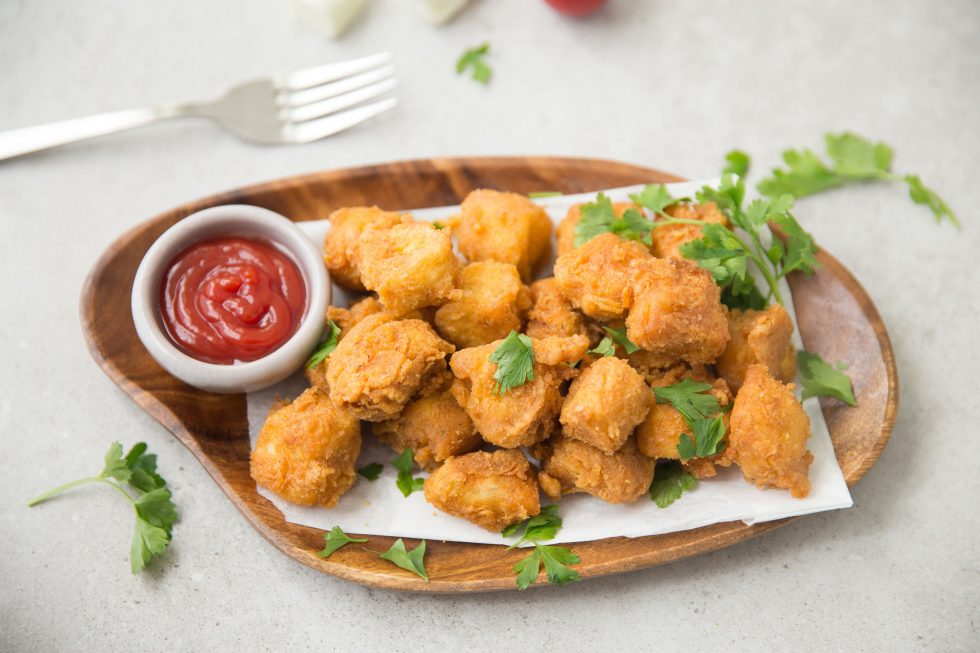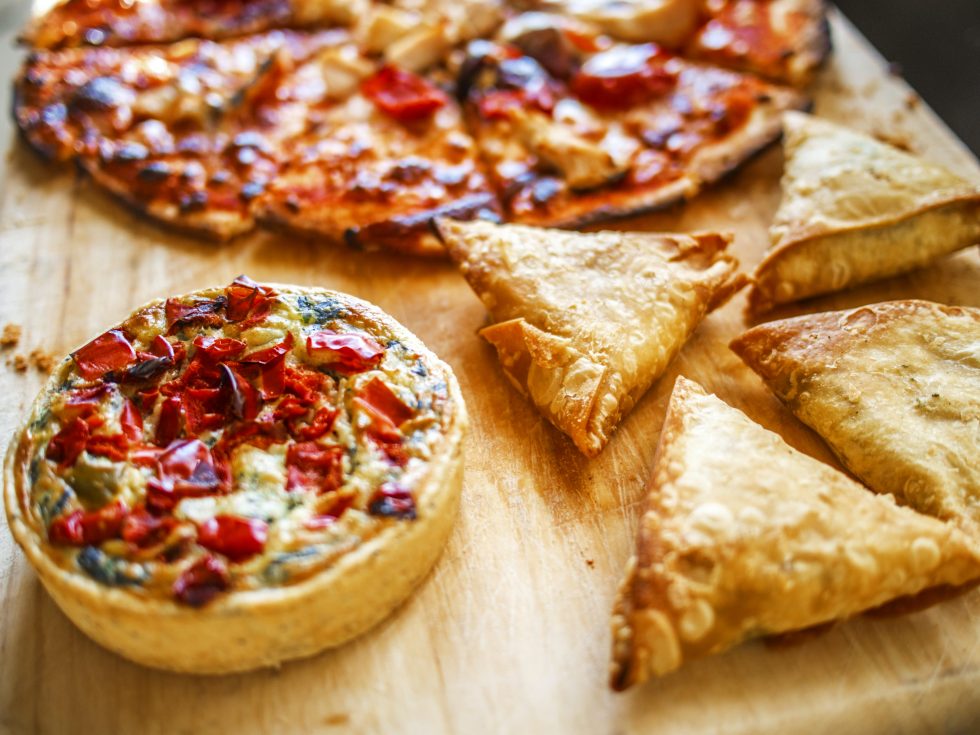Indian snacks are flavourful and unique, offering a sneak-peak into countries such as India, Pakistan and Bangladesh. Sometimes referred to as chaat, meaning a savory snack, you have to try these nine irresistible Indian snack foods. Traditionally served at road-side trucks and food carts throughout India and South Asia, you’ll surely love these mouth-watering snacks.
- Samosa
- Dahi gujia
- Pakora
- Batata vada
- Kachori
- Kati Roll
- Momo
- Vada
- Punugulu
Nothing beats a quality samosa, stuffed with anything from spicy potatoes to ground lamb. These fried or baked pastries are typically triangular in shape, however, depending on the region, their size, consistency, and shape may differ. Often accompanied by a chutney, these are certainly a favourite around the globe.
Traditionally found in Northern Indian, this snack is often served at festivals and other large events. It is a sweet dumpling, typically stuffed with khoya, or milk solids, accompanied by dry fruit mixtures. With that being said, recipes vary, including everything from ginger to cashews, lentils to coriander seeds. Baked or fried, this snack is known for its half moon shape and is often served with yogurt.
Variety is the spice of life, and in terms of pakoras, the sky is the limit. Made by taking one to two key ingredients, such as onion, potato, spinach, cauliflower, paneer, or even plantain, the ingredients are then dipped in a gram flour and fried. Depending on the ingredients used, the names will differ — for example, an aloo pakora is made from potato, whereas a palak pakora is made from spinach.
Popular in the west-central state of Maharashtra, this is a popular vegetarian fast food. Interestingly, ‘batata’ means potato in Portuguese — who initially introduced potatoes to India. The patty is made from mashed potato, coated with chickpea flour, and then deep-fried. Spherical in shape, this delicious treat is often served with a chutney.
Popular throughout India and Pakistan, as well as other countries throughout South Asia, this spicy snack is a round delight that is stuffed and then baked. Most commonly, it is made using a fine flour pastry, stuffed with a mixture of beans, gram flour, chili peppers, black pepper, salt, and a range of other spices.
Originating in Kolkata, the capital of India’s West Bengal state, this street food is made of a skewer-roasted kebab, wrapped in a traditional flatbread, known as paratha. This dish has evolved into many variants and today, mostly any filling wrapped in an Indian flatbread is referred to as a kati roll.
Believed to be Tibetan in origin, momos are extremely popular in the northeast Indian state of Sikkim. In many areas, it is a common street food, whereas other regions showcase this dish as a restaurant staple. Made from a steamed bun, this snack is then filled with ingredients such as potato, cheese, vegetables, and/or different meats.
This savory fritter is a popular snack in South India, and is typically made with potatoes, onions, and lentils — however, many variations exist today. This snack may also be served as a variation of a dumpling or doughnut. Although an ideal snack, vadas are also often served as an accompaniment to another dish or as a breakfast staple.
A common street food in Vijayawada and other coastal districts of Andhra, this deep-fried snack is made with a rice batter, urad dal (split black peas) and spices. Typically crispy on the outside and soft on the inside, punugulu is often served with a peanut or coconut chutney After reading this list, your mouth is surely watering — so, what are you waiting for? If you’re looking for creative Indian snacks in the Greater Vancouver region, be sure to check out our menu.


